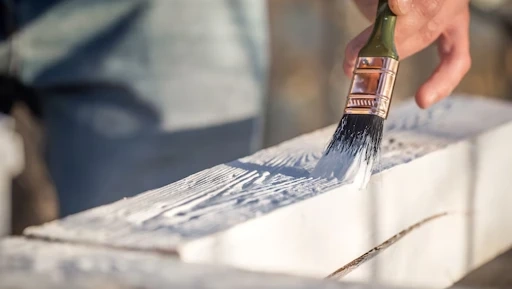Maintaining your home’s exterior is crucial for both aesthetic appeal and protection against the elements. In Wilmington, NC, with its humid climate, salt air from the coast, and occasional storms, your home’s exterior can experience rapid wear and tear.
Over time, these environmental factors can cause paint to fade, crack, or peel, leaving your home vulnerable to further damage.
Exterior painting in Wilmington, NC, not only enhances curb appeal but also helps safeguard your investment. Knowing how often to repaint and the right time to do so can help extend the lifespan of your paint job and keep your home looking its best.
Ideal Repainting Frequency in Wilmington
Generally, homes in Wilmington should undergo exterior painting every 5 to 10 years. However, this timeline can vary based on several factors:
Siding Material: Different materials have varying lifespans before requiring repainting.
Paint Quality: High-quality paints often last longer and provide better protection.
Exposure to Elements: Homes facing direct sunlight or coastal winds may need more frequent attention.
Siding Material and Repainting Intervals
The type of siding your home has significantly influences how often it needs repainting:
Wood Siding: Typically requires repainting every 3 to 7 years due to its susceptibility to moisture and decay.
Stucco: Generally lasts 5 to 6 years before showing signs of wear.
Vinyl Siding: While durable, it may need repainting every 10 to 15 years, depending on exposure to the elements.
Brick: Often requires less frequent repainting, potentially every 15 to 20 years, as it is more resistant to weathering.
Climate Considerations in Wilmington
Wilmington's coastal climate poses unique challenges:
Humidity: High moisture levels can promote mold and mildew growth, leading to paint deterioration.
Salt Air: Salt from the ocean can corrode surfaces and cause paint to peel.
Storms: Occasional heavy rains and winds can damage the paint and underlying materials.
To mitigate these effects, it's advisable to inspect your home's exterior regularly and address any issues promptly.
Signs That Indicate It's Time to Repaint
Even if it's not yet time for a complete repaint, sure signs suggest that touch-ups or maintenance are needed:
Peeling or Cracking Paint: Indicates that the paint is no longer adhering properly.
Fading Colors: Suggests that the paint has lost its protective qualities.
Mold or Mildew Growth: Common in humid climates and can damage the paint and siding.
Chalky Residue: A sign of paint degradation, especially on darker colors.
Addressing these issues early can prevent more extensive damage and extend the life of your paint job.
Optimal Timing for Exterior Painting
Timing is crucial for a successful exterior painting project:
Best Seasons: Spring and Fall are ideal due to mild temperatures and lower humidity.
Avoid: Painting during summer can lead to rapid drying, causing uneven application. Winter temperatures can cause paint to freeze before curing.
Scheduling your painting project during optimal weather conditions ensures better adhesion and a longer-lasting finish.
Maintenance Tips to Extend Paint Life
Regular maintenance can significantly prolong the life of your exterior paint:
Annual Cleaning: Use a soft wash or low-pressure wash to remove dirt, mold, and mildew.
Gutter Maintenance: Ensure gutters are clean to prevent water overflow that can damage the siding.
Inspect Regularly: Check for signs of wear, such as cracks or peeling, and address them promptly.
By incorporating these practices, you can maintain your home's exterior in top condition between repaints.
Choosing the Right Paint for Coastal Climates
Selecting the appropriate paint is vital for durability:
Mildew-Resistant Paints: Essential for combating mold and mildew growth in humid environments.
UV-Resistant Paints: Protect against sun damage and fading.
Elastomeric Coatings: Provide flexibility and can bridge hairline cracks, offering added protection.
Consulting with a professional can help you choose the best paint suited for Wilmington's climate.
Professional Painting Services in Wilmington
While DIY projects can be rewarding, professional painters bring expertise and efficiency:
Quality Workmanship: Ensures a flawless finish and proper application.
Time-Saving: Professionals complete the job in a timely manner, allowing you to enjoy your refreshed home sooner.
Warranty: Many professional services offer warranties, providing peace of mind.
If you're considering repainting your home's exterior, consulting with a local professional can provide tailored advice and services to meet your needs.
Conclusion
Repainting your home's exterior in Wilmington, NC, is more than just an aesthetic choice—it's a necessary maintenance task to protect your home from the elements. By understanding the factors that influence repainting frequency and recognizing the signs that it's time to repaint, you can ensure your home remains beautiful and well-protected for years to come.


